Newfound penchant of collectors from the HKSAR and mainland for a wider range of art genres offers opportunities for Sotheby’s
 An auction scene at Sotheby’s. (PHOTO PROVIDED TO CHINA DAILY)
An auction scene at Sotheby’s. (PHOTO PROVIDED TO CHINA DAILY)
![]()
Editor’s note: This series, marking the 25th anniversary of the Hong Kong’s return to the motherland, explores the experiences of leaders of organizations operating in Hong Kong over the past quarter-century. In this installment of the series, Sotheby’s managing director of Asia tells why the city’s auction and art sectors are booming.
Sotheby’s — the first international auction house to conduct sales in Hong Kong, in 1973 — has grown, evolved and flourished in tandem with the Hong Kong Special Administration Region, established in 1997, offering a privileged glimpse into the ever-changing trends among global art collectors and enthusiasts.
Hong Kong is one of the world’s major art hubs, which is built on strong cultural and commercial foundations. Its strategic location makes it easily accessible for clients from the APAC region and beyond.
Nathan Drahi, managing director of Asia at Sotheby’s
When one is asked to describe Hong Kong, “cultural eclecticism”, “diversity” and “inclusivity” could be the first words that come to mind, as they have been strongly associated with the city in both the past and present. In the 25 years since the establishment of the HKSAR, these unique characteristics have become the jewels in the crown of the city, becoming prominent in the world’s art and cultural playground.
Art Basel, one of the seminal international art fairs, picked Hong Kong as a site to host the event, luring in 130 galleries to exhibit their represented works and tens of thousands of visitors from across the world to enjoy an art indulgence this year in Hong Kong. Likewise, it’s not without reason that Sotheby’s chose Hong Kong nearly 50 years ago as the first location in Asia to hold auctions, resulting in success with fanfare.
“Hong Kong is one of the world’s major art hubs, which is built on strong cultural and commercial foundations. Its strategic location makes it easily accessible for clients from the APAC region and beyond,” said Nathan Drahi, managing director of Asia at Sotheby’s.
“Hong Kong’s free-market economy, efficient business infrastructure and well-developed professional services add to its strengths and cements Hong Kong as Sotheby’s current hub in Asia.”
The Sotheby’s coming of age in Hong Kong is nothing short of a milestone achievement, complete with sales records broken again and again: 2017 marked the introduction of Western Contemporary Art at the Hong Kong Spring Sales; the Asia Sale total had increased over 100 times, from HK$89 million ($11.3 million) in 1997 to HK$10 billion in 2021.
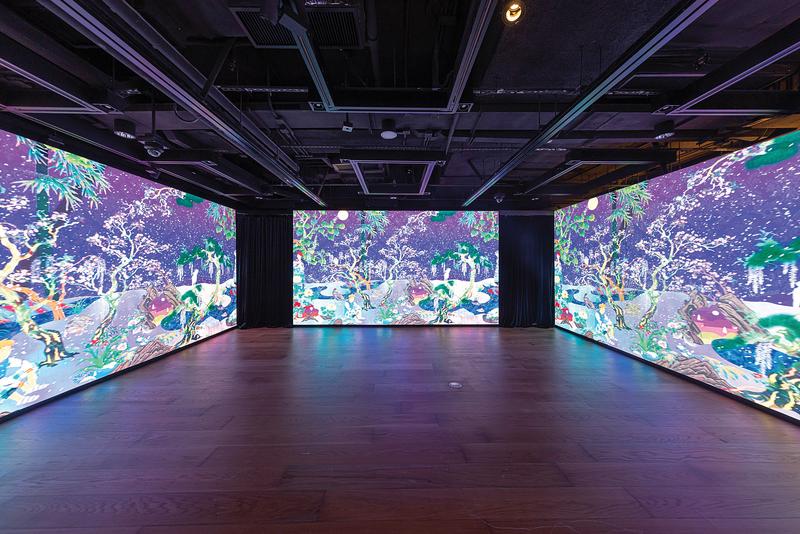 The digital version of New York-based Japanese artist Tomokazu Matsuyama’s Frosti Aurora is displayed on three screens to create an immersive viewing atmosphere for visitors to the artist’s Harmless Charm exhibition at Sotheby’s Hong Kong Gallery in June. (PHOTO PROVIDED TO CHINA DAILY)
The digital version of New York-based Japanese artist Tomokazu Matsuyama’s Frosti Aurora is displayed on three screens to create an immersive viewing atmosphere for visitors to the artist’s Harmless Charm exhibition at Sotheby’s Hong Kong Gallery in June. (PHOTO PROVIDED TO CHINA DAILY)
The art collection and investment market have all the hallmarks of zeitgeist dynamics, where the trends and consumers’ predispositions are in constant flux, largely dictated by the young generations, the emergence of new genres spurred by advanced technologies, and such unpredictable incidents as the COVID-19 pandemic.
Over the past 25 years, clients’ tastes in Asia as a whole have become more sophisticated and diversified, which is well illustrated on the Chinese mainland, Drahi said.
“When we opened our doors in Asia, collectors from the mainland were mostly focused on acquiring Chinese art — works most closely connected with their own cultural heritage,” he said. “Over the past decade, though, we have seen an explosion of interest in modern and contemporary art. Last year, we saw a record-breaking HK$4.7 billion sales total for the category — up 36 percent from 2020 — from Zhang Daqian to Picasso, and now to new contemporary talents, including the likes of Louis Fratino and Anna Weyant.”
Tellingly, the shifting trend signals that collectors on the mainland are consciously expanding their exposure to the global art market and are more globally connected than ever, Drahi said.
The mainland collectors’ and investors’ newfound penchant for a wider range of art genres and aesthetics, coupled with their overall exponential growth of economic capacity, has contributed substantially to Sotheby’s sales in Hong Kong, and Asia in general.
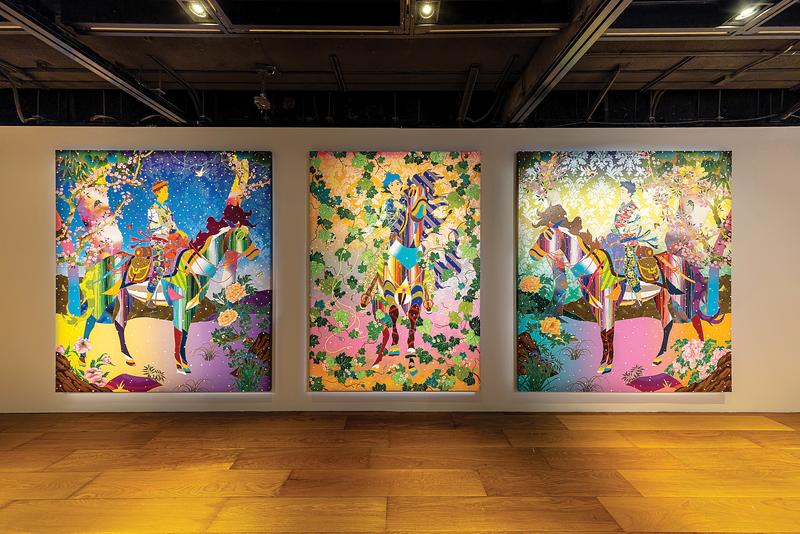 Analog paintings of the artist were also on show at the same exhibition. (PHOTO PROVIDED TO CHINA DAILY)
Analog paintings of the artist were also on show at the same exhibition. (PHOTO PROVIDED TO CHINA DAILY)
New trends
The pandemic has put the art and cultural industry to a harsh test, but the zeitgeist-driven, malleable and resilient art collection and investment space in Hong Kong has passed it with flying colors. And leading the change and charge of adaptation is the young generation.
“The pandemic has accelerated the growth of our online auctions, touch points and experiences, and in turn led to an increase of digitally savvy young collectors dealing with Sotheby’s. This new generation of collectors are millennials (about 25 to 40 years old) and comfortable making purchases online through digital interactions with our lots,” he said. For example, Carson Guo, based in Asia, purchased a complete set of 248 Supreme skateboard decks, paying $800,000 at a Sotheby’s New York sale, and his first touch point was through the Sotheby’s website. “We are also seeing an influx of younger, tech-savvy collectors cross over into purchases of physical works such as Alberto Giacometti’s Le Nez, bought by Justin Sun in New York last year,” Drahi said.
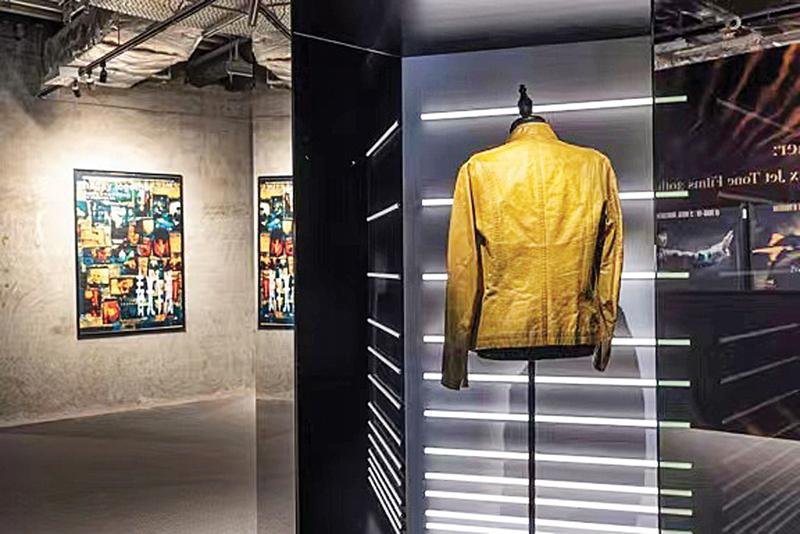 The iconic yellow leather jacket (right), worn by Leslie Cheung Kwok-wing in Hong Kong filmmaker Wong Kar-wai’s masterpiece Happy Together, and the film’s poster (left), which is autographed by Wong, are highlight collectibles that were showcased at Sotheby’s Hong Kong Fall Auctions 2021 preview in September. (PHOTO PROVIDED TO CHINA DAILY)
The iconic yellow leather jacket (right), worn by Leslie Cheung Kwok-wing in Hong Kong filmmaker Wong Kar-wai’s masterpiece Happy Together, and the film’s poster (left), which is autographed by Wong, are highlight collectibles that were showcased at Sotheby’s Hong Kong Fall Auctions 2021 preview in September. (PHOTO PROVIDED TO CHINA DAILY)
Instead of biting the dust wrought by the pandemic, Sotheby’s Asian auction sales set a record last year, with its Asian auction sales for 2021 reaching over $1.3 billion and a 90 percent sell-through rate in both auctions and private sales. Drahi attributes this triumph to collectors’ agility and audacity to explore new ways of interaction with the auction house.
“We have made encouraging strides in the digital realm. From Asia’s debut of the multicamera livestream format in 2020, to the number of videos we produce increasing fivefold since the pre-pandemic era, to the introduction of 360-degree videos and virtual tours — all help to create better immersive experiences in the digital world,” Drahi said. “These cutting-edge experiences have been embraced both by our existing and new audiences — all of whom are confident transacting with us remotely because of the deep expertise which is core to our brand.”
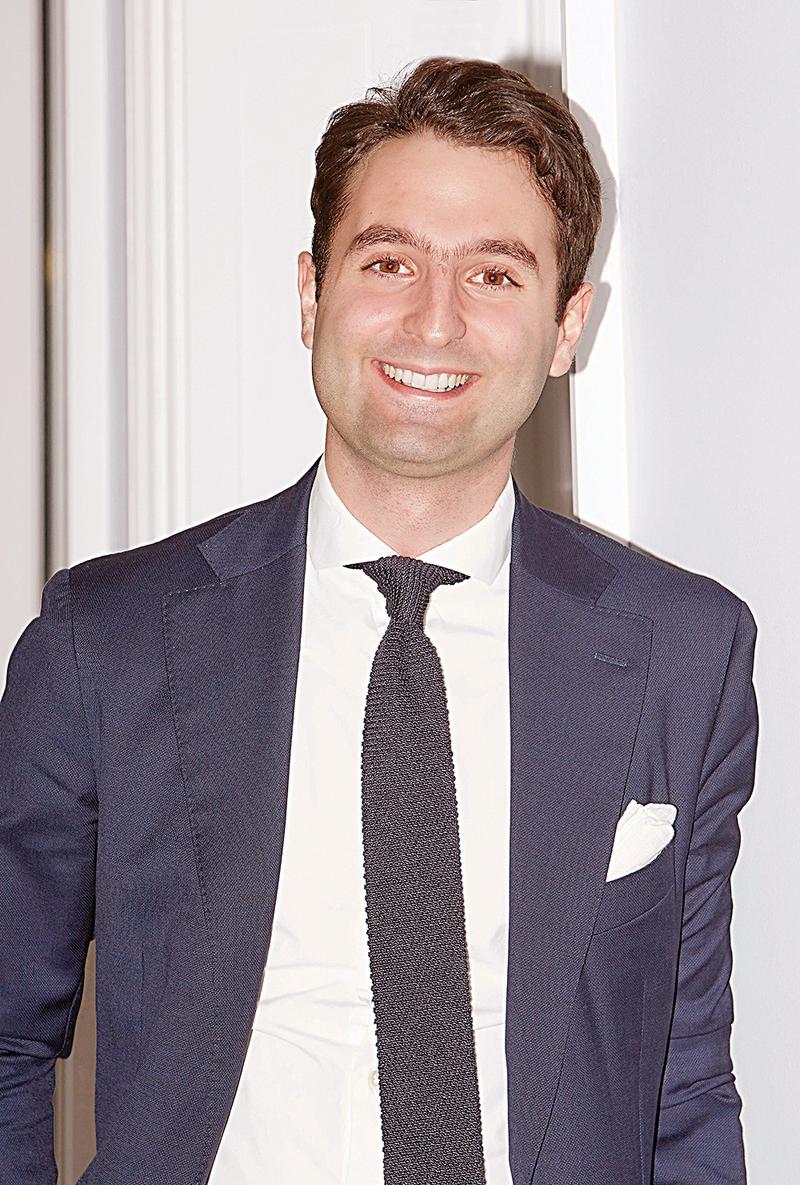 Nathan Drahi, managing director of Asia at Sotheby’s. (PHOTO PROVIDED TO CHINA DAILY)
Nathan Drahi, managing director of Asia at Sotheby’s. (PHOTO PROVIDED TO CHINA DAILY)
The onslaught of trendy, outlandish, original, and highbrow content endorsed by celebrities and social media influencers also helps expand the gamut of consumable and collectible items, prompting ever more acute interest and demand for investment in collectibles among today’s collectors whose tastes vary and cover a vast range.
“The last 18 months or so has seen a significant expansion of Sotheby’s luxury offering in Hong Kong — with the launch of Sotheby’s first dedicated sneaker auction, the debut of a cross-category luxury sale series encompassing jewelry, watches, wine, handbags and sneakers; and even the launch of our first ever tea auction.” Drahi spoke of the auction house’s latest developments against the backdrop of the pandemic, which is a curse to all industries but in some way a blessing to the art collection and investment sphere.
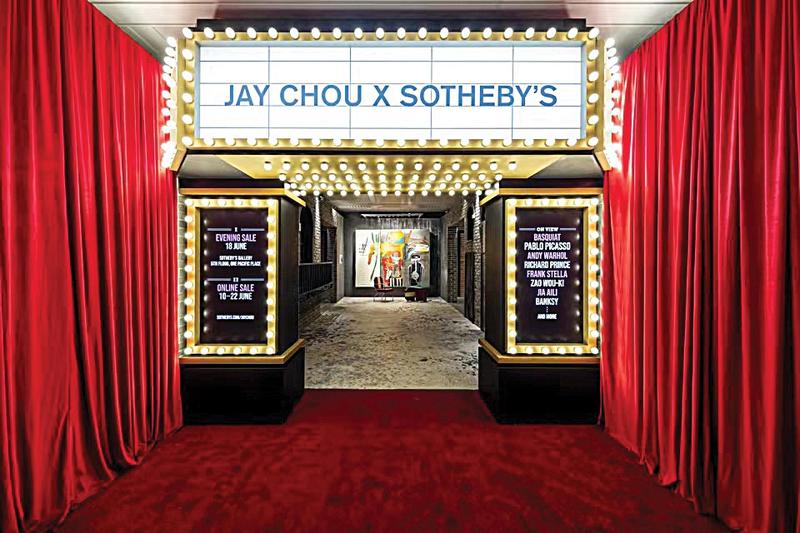 The entrance to Jay Chou x Sotheby’s Evening Sale event at Hong Kong’s K11 Musea in June 2021. The famous singer-songwriter is the guest curator of the auction house’s inaugural edition of its Contemporary Curated: Asia auction series featuring works of prominent as well as up-and-comer artists that are selected by Chou. (PHOTO PROVIDED TO CHINA DAILY)
The entrance to Jay Chou x Sotheby’s Evening Sale event at Hong Kong’s K11 Musea in June 2021. The famous singer-songwriter is the guest curator of the auction house’s inaugural edition of its Contemporary Curated: Asia auction series featuring works of prominent as well as up-and-comer artists that are selected by Chou. (PHOTO PROVIDED TO CHINA DAILY)
Beneath the surface of collectors’ fervent fascination with art and their dexterity in terms of conceiving and embracing zeitgeist-informed novel art phenomena is the SAR government’s persistent endeavors in cultivating a vivacious art appreciation vibe and verdant forest for artists to flex their creativity.
“Thanks to the government’s efforts in promoting art and culture, the development of leading art premises and cultural institutions have put Hong Kong on the map as one of the region’s landmark art and cultural destination for local and international visitors alike,” Drahi said. “The launch of M+, the Xiqu Centre and the latest grand opening of the Hong Kong Palace Museum illustrate the enduring importance of art and culture to the public. In addition, the government also subsidized over 670 performances of local art groups or artists to perform overseas since 2017, fostering a cultural dialogue between Hong Kong and the world.”
Upbeat about the potential for future growth of presence and sales in both Hong Kong and the mainland, Drahi said, “Much of this is to do with expanding our offerings, our sales channels and our audience, with digital advancements at the heart.”


